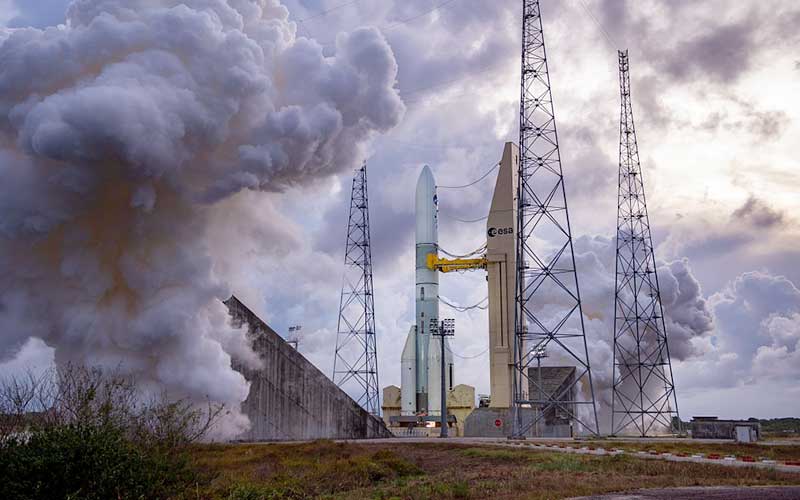
The European Space Agency and the French space agency CNES have committed €40.5 million to construct facilities at the Guiana Space Centre to produce hydrogen via the solar-powered electrolysis of water. The hydrogen produced by these facilities will be utilized to power Ariane 6, which is expected to be launched on its maiden flight between 15 June and 31 July 2024.
Hydrogen is currently produced at the spaceport via steam reforming of methanol. This method is generally preferred over electrolysis because it requires significantly less electricity, which has traditionally been expensive to produce. The method does, however, produce carbon dioxide and carbon monoxide as byproducts, both of which are greenhouse gases that contribute to global warming. With the technological advancement and proliferation of solar power, switching to electrolysis has become more economically viable than in the past.
Project Hyguane will see ESA and CNES invest €40.5 million to build a solar farm and the required distribution systems at the spaceport to begin producing greener hydrogen. The facilities are being designed to allow for easy expansion in the future.
Contracts to begin work on the facility were awarded on 13 December to Air Liquide, SARA, MT-Aerospace, and BEBLUE. The Université de Guyane, Université de Liège, and Université Libre de Bruxelles will also be involved in the project. In addition to contributions from CNES and ESA, the French Environment and Energy Management Agency (ADEME) has committed €10 million to the project.
Initially, the facility will, once operational, supply 12% of the required hydrogen to operate Ariane 6 for nine flights per year. At this capacity, the facility is expected to save over 3,000 tonnes of equivalent carbon dioxide emissions per year.
The new hydrogen production facilities at the Guiana Space Centre are expected to be completed by 2026. The project may also be extended with the aim of doubling hydrogen production.




